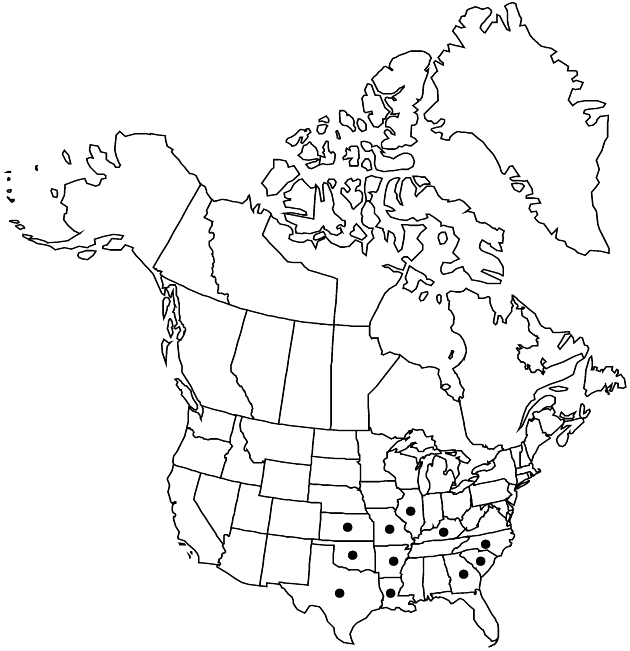Solidago radula
J. Acad. Nat. Sci. Philadelphia 7: 102. 1834.
Plants 30–90 cm; caudices, sometimes also creeping rhizomes as well. Stems usually 1–3, ascending to erect, scabrous to loosely puberulent. Leaves: basal and proximal usually withering by flowering, tapering to long-winged petioles, blades oblanceolate, 30–100 × 7–20(–30) mm, margins serrate or crenate, mid usually largest, apices acute to obtuse, acuminate, faces scabrous; mid and distal cauline subsessile (1 mm) or sessile, blades (sometimes ± shiny) elliptic to oblanceolate, 10–50 × 5–15(–25) mm, greatly reduced distally, grading into bracts, firm, bases convex-cuneate to rounded, margins finely serrate, often 3-nerved, nerves usually distinct abaxially, faces distinctly scabrous. Heads 20–260, in paniculiform arrays, narrowly to broadly secund, pyramidal, branches recurved, secund. Peduncles 0.5–2 mm; bracteoles 1–5, linear-lanceolate to ovate, minute, grading into phyllaries distally. Involucres narrowly campanulate, 3–5 mm. Phyllaries in 3–4 series, unequal, oblong, midnerves swollen distally, obtuse or acute to slightly acuminate. Ray florets 4–7; laminae 2–3.5 × 0.2–0.7 mm. Disc florets 4–6; corollas 3 mm, lobes 1 mm. Cypselae 1.5–2.5 mm, sparsely to moderately short-strigose; pappi 3 mm. 2n = 18, 36.
Phenology: Flowering Aug–Oct.
Habitat: Open rocky places, dry woods, especially calcareous soils
Elevation: 0–600 m
Distribution

Ark., Ga., Ill., Kans., Ky., La., Mo., N.C., Okla., S.C., Tex.
Discussion
Solidago radula is disjunct in Georgia, North Carolina, and South Carolina. J. R. Beaudry (1969) reported a diploid from Smithville, Dekalb County, Tennessee; that has not been confirmed.
Selected References
None.